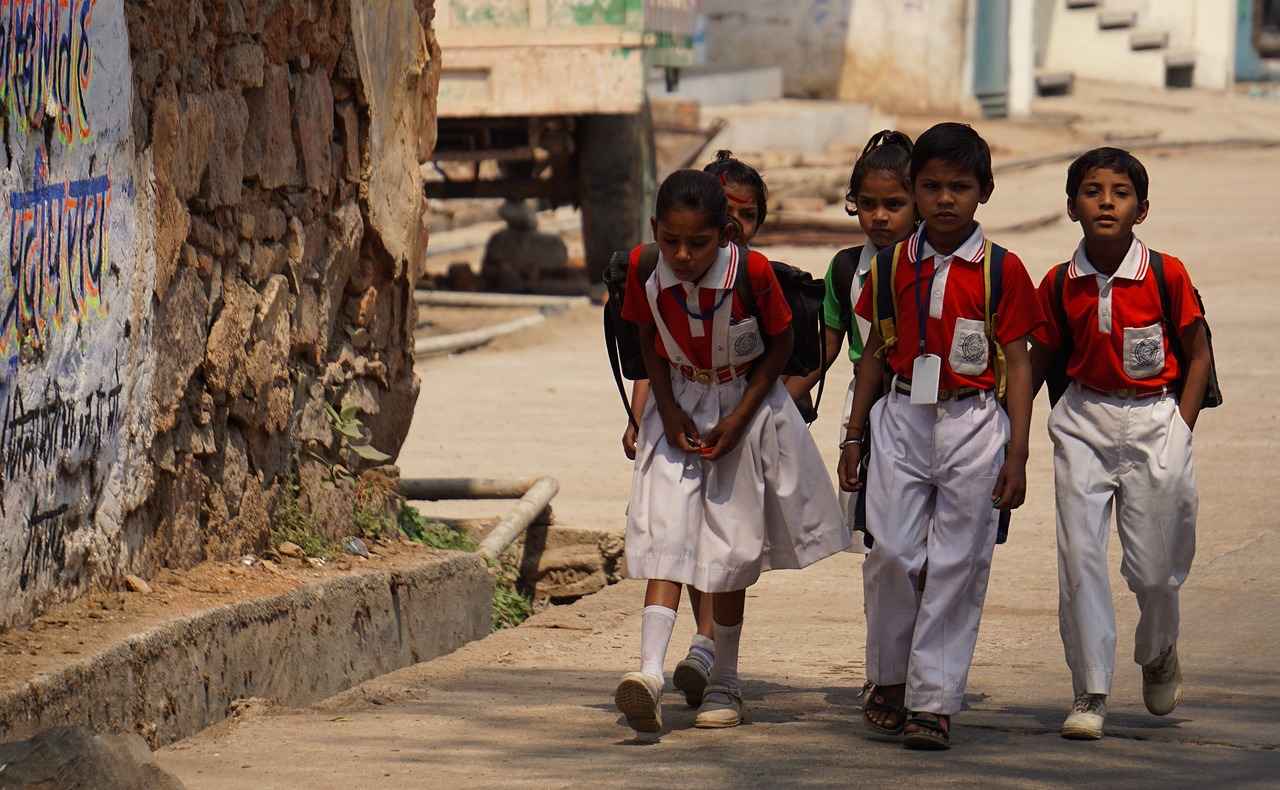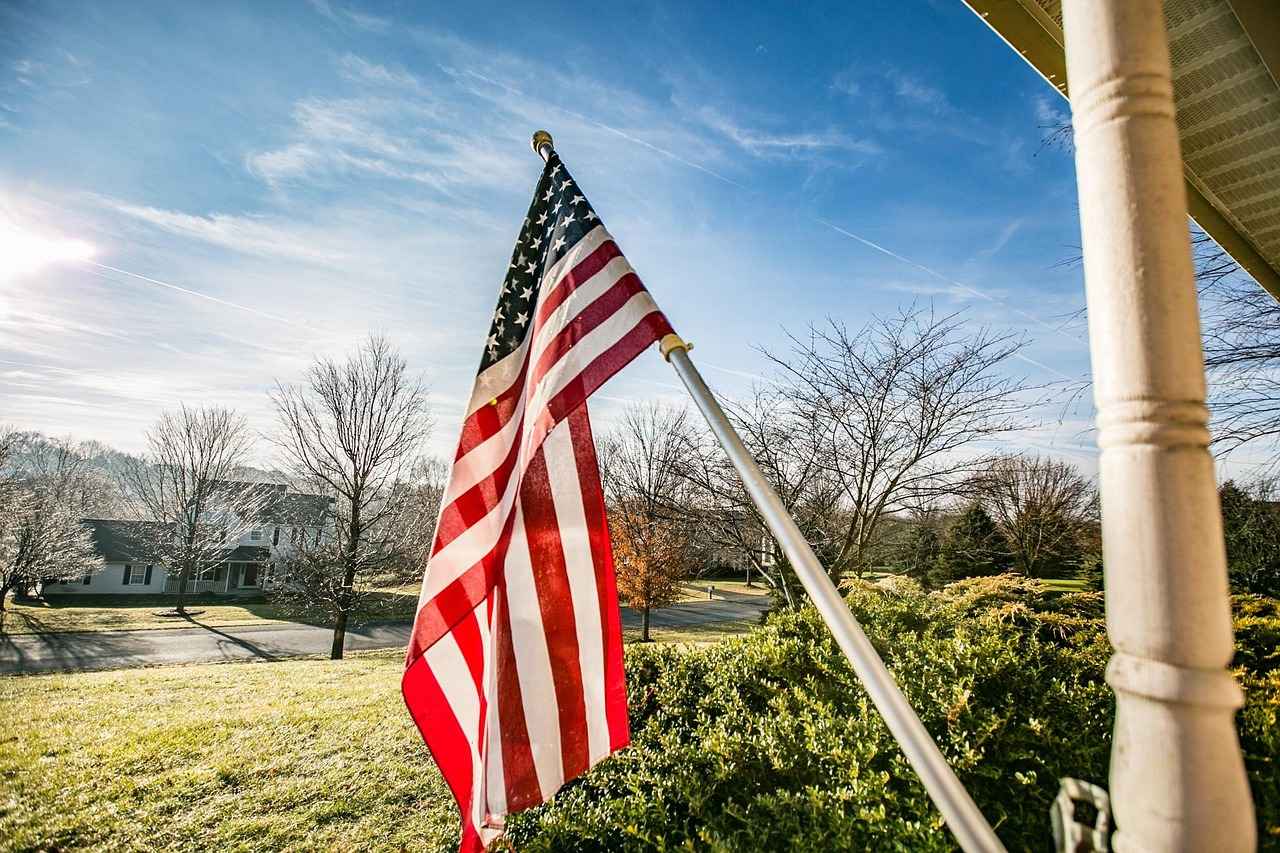This article explores the political influence of the Indian American community in New York, assessing their representation, impact on policy, and the challenges faced in amplifying their voices.
Understanding the Indian American Demographic in New York
The Indian American community in New York is not only diverse but also rapidly expanding. This community encompasses a variety of ethnicities, languages, and professions, which collectively contribute to a unique political landscape. According to recent census data, Indian Americans are one of the fastest-growing ethnic groups in the state, with significant concentrations in urban areas like Queens and Brooklyn. This demographic diversity brings a wide array of perspectives and priorities, making it essential for political representatives to understand and address the needs of this community.
The Historical Context of Indian American Political Engagement
Indian Americans have a rich history of political involvement in the United States, with notable milestones that have shaped their presence in New York politics. The journey began in the early 20th century, when Indian immigrants first arrived in the U.S. Despite facing substantial challenges, they established organizations aimed at advocating for civil rights and political representation. Over the decades, these efforts have evolved, leading to increased participation in local, state, and national elections.
- Key Historical Figures in Indian American Politics: Prominent leaders such as Dalip Singh Saund, the first Indian American elected to Congress, paved the way for future generations. Their contributions have been instrumental in fostering political engagement within the community.
- Early Pioneers of Indian American Political Activism: The initial wave of Indian immigrants laid the groundwork for political activism, advocating for civil rights and representation in various political arenas.
- Modern Influencers and Their Contributions: Contemporary leaders continue to shape the political narrative, focusing on issues relevant to the Indian American community while fostering broader coalitions.
Impact of Indian American Voters in Elections
The voting power of Indian Americans in New York has grown substantially over the years. This demographic has increasingly influenced election outcomes and policy decisions at both local and state levels. With higher voter turnout rates, especially among younger generations, Indian Americans are becoming a key constituency that politicians cannot afford to ignore. Their collective voice has the potential to sway critical issues such as immigration reform, healthcare, and education policy.
Challenges Faced by Indian Americans in Political Representation
Despite their growing influence, Indian Americans encounter several barriers to effective political representation. Cultural differences and language barriers can hinder active participation in the political process, limiting the community’s overall impact. Moreover, systemic issues often lead to the unique needs of Indian Americans being overlooked, resulting in underrepresentation in key decision-making processes.
- Barriers to Political Participation: Many Indian Americans face challenges related to cultural integration and understanding the political landscape, which can deter them from engaging fully.
- Systemic Issues in Political Representation: The political landscape often overlooks the unique needs of Indian Americans, leading to underrepresentation in key decision-making processes.
The Role of Indian American Organizations in Advocacy
Various organizations play a crucial role in advocating for Indian American interests. These groups mobilize voters, provide resources for political education, and create platforms for community voices. Grassroots movements have proven effective in raising awareness and mobilizing community members around critical issues affecting Indian Americans.
- Grassroots Movements and Their Effectiveness: Local initiatives have successfully engaged community members, fostering a sense of belonging and empowerment.
- National vs. Local Organizations: A Comparative Analysis: Understanding the differences in focus and strategy between national and local organizations helps clarify their roles in advocating for Indian American interests.
The Future of Indian American Political Influence
As the community continues to grow and evolve, its political influence is expected to expand, shaping future policies and political landscapes in New York. New generations of leaders are emerging within the Indian American community, bringing fresh perspectives and innovative strategies to political engagement. Implementing effective strategies for increasing political engagement can empower the Indian American community to assert its influence more prominently in New York politics.

Understanding the Indian American Demographic in New York
The Indian American community in New York represents a vibrant tapestry of cultures, languages, and professions. This dynamic group has significantly influenced the social, economic, and political landscape of the state. To truly understand the breadth of this community, it is essential to explore its diversity, the various ethnicities represented, and the unique contributions of its members.
New York is home to a thriving Indian American population, which has grown exponentially over the past few decades. This community is not monolithic; it encompasses a wide range of ethnic backgrounds, including Punjabi, Gujarati, Tamil, Bengali, and many others. Each subgroup brings its own cultural traditions, languages, and perspectives, enriching the overall community.
- Languages Spoken: The linguistic diversity within the Indian American community is remarkable. While English is the predominant language, many individuals also speak their native languages, such as Hindi, Punjabi, Tamil, and Urdu. This multilingualism not only reflects cultural heritage but also enhances communication within the community and fosters connections with other ethnic groups.
- Professional Landscape: Indian Americans in New York are involved in various professions, including technology, healthcare, finance, education, and entrepreneurship. This diverse professional involvement contributes to the economic vitality of the state and positions Indian Americans as key players in the workforce.
- Educational Attainment: The Indian American community is characterized by a high level of educational attainment. Many members hold advanced degrees and are well-represented in fields such as engineering, medicine, and academia. This emphasis on education has significant implications for political engagement and advocacy.
Despite their growing presence, Indian Americans in New York face certain challenges that can affect their political representation. Cultural differences and historical underrepresentation can lead to feelings of disenfranchisement among community members. However, organizations and grassroots movements are working diligently to bridge these gaps and ensure that the voices of Indian Americans are heard in the political arena.
Moreover, the increasing visibility of Indian Americans in various sectors has started to shift perceptions and encourage greater participation in civic life. As the community continues to evolve, the importance of understanding its unique characteristics becomes even more critical for fostering a more inclusive political landscape.
In summary, the Indian American demographic in New York is characterized by its rich diversity and significant contributions across multiple sectors. As this community continues to grow, its potential to influence policies and advocate for its interests will likely expand, making it a vital component of New York’s political fabric.

The Historical Context of Indian American Political Engagement
The journey of Indian Americans in the political arena of the United States, particularly in New York, is a testament to their resilience and determination. This community has navigated a complex historical landscape, evolving from early immigrants seeking better opportunities to influential political players shaping local and national policies.
In the late 19th and early 20th centuries, the first wave of Indian immigrants arrived in the U.S., primarily as laborers in agriculture and railroads. These early pioneers faced significant challenges, including discriminatory laws and social isolation. Despite these hurdles, they began to organize and advocate for their rights. The formation of organizations like the Ghadar Party in the early 1900s marked a pivotal moment in Indian American political activism, as members fought against British colonial rule and sought to raise awareness about India’s plight.
As the years progressed, the Indian American community began to gain visibility in the U.S. political landscape. The 1965 Immigration Act significantly increased the number of Indian immigrants, leading to a more diverse and educated demographic. This influx laid the groundwork for political engagement, as many newly arrived individuals were professionals who understood the importance of civic participation.
Throughout the 1970s and 1980s, Indian Americans began to emerge in various political roles. Notable figures such as Dalip Singh Saund became the first Indian American elected to the U.S. Congress in 1956, serving as a trailblazer for future generations. His election not only symbolized the growing political engagement of Indian Americans but also inspired many to pursue careers in public service.
In New York, the political landscape began to shift in the late 20th century as Indian Americans increasingly participated in local governance. The establishment of various community organizations aimed at fostering political awareness and mobilizing voters played a crucial role in this transformation. Events like the Indian Independence Day Parade in New York City became platforms for showcasing political aspirations and cultural pride, further connecting the community to the political process.
The turn of the 21st century saw a surge in Indian American political representation. Figures such as Kamala Harris, who became the first female Vice President of the United States, and Pramila Jayapal, a prominent member of Congress, have highlighted the growing influence of Indian Americans in shaping national policy. Their success stories resonate deeply within the community, encouraging greater participation and activism.
However, despite these advancements, challenges remain. Many Indian Americans still grapple with systemic barriers to political engagement, including cultural differences and underrepresentation in key decision-making processes. The community’s unique needs are often overlooked, necessitating ongoing advocacy and representation to ensure their voices are heard.
In conclusion, the historical context of Indian American political engagement in New York is rich and multifaceted. From early pioneers to contemporary leaders, the community has made significant strides in political representation. As they continue to navigate the complexities of the political landscape, their journey remains a powerful narrative of resilience, advocacy, and hope.
Key Historical Figures in Indian American Politics
The political landscape of the United States has been significantly shaped by the contributions of key historical figures from the Indian American community. These individuals have not only paved the way for future generations but have also influenced policies that resonate with a broader audience. Their journeys reflect the challenges and triumphs faced by Indian Americans in the political arena.
Throughout history, several prominent leaders have emerged from the Indian American community, each leaving an indelible mark on the political fabric of the nation. These figures have served as trailblazers, advocating for civil rights, social justice, and political representation. Their efforts have laid the groundwork for the increasing visibility and influence of Indian Americans in politics.
- Dalip Singh Saund: The first Indian American elected to the U.S. Congress, Saund’s election in 1956 was a landmark moment for the community. He championed issues that affected immigrants and worked tirelessly to promote understanding between cultures.
- Kamala Harris: As the first female Vice President and the first of South Asian descent, Harris has become a symbol of progress for many. Her career reflects a commitment to justice, equality, and representation, inspiring countless individuals within the Indian American community.
- Norma M. K. Khanna: A lesser-known but influential figure, Khanna worked on grassroots initiatives that focused on immigrant rights and community empowerment. Her efforts in local politics demonstrated the importance of representation at all levels.
The influence of these historical figures extends beyond their individual achievements. They have collectively shaped policies that address the unique challenges faced by the Indian American community. For instance, their advocacy for immigration reform has led to significant changes in legislation that benefit not only Indian Americans but also other immigrant groups.
Moreover, these leaders have played a crucial role in fostering a sense of community among Indian Americans, encouraging political participation and engagement. Their legacies serve as a reminder that political activism is essential for achieving representation and equity.
Despite their successes, many of these leaders faced significant challenges, including cultural barriers, discrimination, and a lack of representation within political parties. These obstacles often made it difficult for them to advocate effectively for their communities. However, their perseverance and dedication have inspired future generations to continue the fight for equality and representation.
In conclusion, the contributions of key historical figures in Indian American politics have been instrumental in shaping the community’s political landscape. Their legacies not only highlight the importance of representation but also serve as a source of inspiration for future leaders who aspire to make a difference.
Early Pioneers of Indian American Political Activism
The played a crucial role in shaping the political landscape for future generations. Their efforts laid the foundational groundwork for civil rights and representation, which greatly influenced the political engagement of Indian Americans in the United States.
In the late 19th and early 20th centuries, the first wave of Indian immigrants arrived in America, primarily seeking better economic opportunities. Among them were individuals who recognized the importance of political involvement as a means to advocate for their rights and the rights of their community. These early immigrants faced significant challenges, including racial discrimination and legal restrictions. However, they persevered, forming organizations and alliances to amplify their voices.
- Formation of Organizations: The early pioneers established organizations such as the Ghadar Party in 1913, which aimed to fight against British colonial rule in India and advocated for the rights of Indians abroad. This group was instrumental in mobilizing support and raising awareness about the issues faced by Indian immigrants in America.
- Advocacy for Civil Rights: Activists like Vijayalakshmi Pandit and Bhagat Singh Thind emerged as key figures in advocating for civil rights. Thind, in particular, fought a landmark legal battle for citizenship, highlighting the systemic barriers that Indian immigrants faced. His case reached the Supreme Court, where it underscored the need for legal recognition and protection of immigrant rights.
- Political Engagement: Many early pioneers recognized that political engagement was essential for achieving long-term change. They began to participate in local politics, advocating for policies that addressed the needs of the Indian American community, including immigration reform and labor rights.
These early activists not only fought for their rights but also paved the way for future generations to participate in the political process. They understood that their struggles were interconnected with broader movements for justice and equality, and they sought to build alliances with other marginalized communities. This spirit of solidarity became a hallmark of Indian American political activism.
As the Indian American community continued to grow in the United States, the legacy of these early pioneers remained influential. Their commitment to civil rights and representation inspired subsequent generations to engage in political activism, leading to increased visibility and influence in various political arenas.
Today, the impact of these early pioneers can be seen in the increasing number of Indian Americans holding political office and actively participating in advocacy efforts. Their foundational work has created a platform for contemporary leaders to build upon, ensuring that the voices of Indian Americans are heard in the ongoing discourse surrounding civil rights and representation.
In conclusion, the early pioneers of Indian American political activism not only fought against discrimination and injustice but also laid the groundwork for a more engaged and politically active community. Their legacy continues to inspire and empower Indian Americans to advocate for their rights and participate fully in the democratic process.
Modern Influencers and Their Contributions
In the ever-evolving political landscape of New York, modern influencers from the Indian American community have emerged as pivotal figures. These leaders are not just shaping the political narrative but are also addressing critical issues that resonate with their community while building alliances across diverse groups.
Modern influencers within the Indian American community are actively engaged in political advocacy and community mobilization. They utilize their platforms to raise awareness about pressing issues such as immigration reform, healthcare, and education. By addressing these topics, they ensure that the voices of Indian Americans are not only heard but are integral to the broader political conversation.
One of the significant contributions of contemporary leaders is their ability to foster coalitions with other minority groups. By collaborating with African American, Latino, and Asian communities, Indian American leaders can amplify their collective voice. This approach not only enhances their political influence but also promotes a more inclusive political environment that recognizes the diverse needs of New York’s population.
Modern influencers are also making strides in both local and national politics. Many have successfully run for office, while others serve as advisors or advocates within political organizations. Their involvement ensures that the concerns of the Indian American community are represented at various levels of government, leading to policies that reflect their interests.
In today’s digital age, technology plays a crucial role in political engagement. Modern influencers leverage social media platforms to reach a wider audience, share information, and mobilize support for various causes. This digital presence enables them to connect with younger generations who are increasingly active in political discussions, ensuring that the community’s voice is vibrant and dynamic.
Contemporary leaders are also at the forefront of advocating for social justice and equality. They address issues such as racial discrimination, economic disparity, and access to education. By championing these causes, they not only uplift the Indian American community but also contribute to the greater fight for justice and equality in society.
Modern influencers understand the importance of mentorship in cultivating the next generation of leaders. They actively engage in programs that empower young Indian Americans, providing them with the skills and resources necessary to navigate the political landscape. This commitment to mentorship ensures a sustainable future for political engagement within the community.
In conclusion, the contributions of modern influencers from the Indian American community in New York are significant and multifaceted. By focusing on relevant issues, building coalitions, engaging in politics, utilizing technology, advocating for social justice, and empowering future leaders, they are actively shaping the political narrative and ensuring that their community’s voice is heard loud and clear.
Impact of Indian American Voters in Elections
The Indian American community in New York has become a significant political force, with their voting power growing substantially over the past few decades. This demographic shift has not only influenced election outcomes but also played a crucial role in shaping policy decisions at both local and state levels. Understanding the impact of Indian American voters in elections is essential to grasp the broader political landscape in New York.
The Indian American population in New York is diverse, encompassing various cultures, languages, and professions. This diversity enriches the political discourse and allows for a wide range of interests to be represented. As of recent estimates, Indian Americans constitute a significant portion of the electorate, particularly in urban areas such as New York City and its suburbs. Their growing numbers have made them a pivotal voting bloc, compelling candidates to address their specific concerns and interests.
Local elections often serve as a barometer for the political influence of Indian Americans. With key positions such as city councilors and school board members, these elections provide a platform for Indian American candidates to emerge and for the community to express its collective voice. For instance, in recent city council races, Indian American candidates have garnered substantial support, reflecting the community’s desire for representation that resonates with their values and priorities.
At the state level, Indian American voters have also made their mark. Their participation has been instrumental in shaping policies on issues such as education, healthcare, and immigration. Candidates seeking election or re-election often prioritize outreach to this demographic, recognizing their potential to sway results. Moreover, Indian American advocacy groups actively engage in lobbying efforts, ensuring that the community’s needs are addressed in legislative discussions.
Effective mobilization strategies have been key to increasing voter turnout among Indian Americans. Community organizations play a vital role in educating voters about the electoral process, organizing voter registration drives, and facilitating discussions on critical issues. Social media campaigns and grassroots efforts have proven effective in reaching younger voters, encouraging them to participate actively in elections.
Despite their growing influence, Indian American voters face several challenges that can hinder their political engagement. Language barriers, cultural differences, and misinformation can discourage participation. Additionally, systemic issues within the political landscape sometimes lead to underrepresentation of their interests in broader political discussions. Addressing these challenges is crucial for further enhancing their impact on elections.
As the Indian American community continues to grow, their political engagement is expected to evolve. Emerging leaders within the community are bringing new perspectives and innovative strategies to the forefront, which could significantly reshape the political landscape in New York. The ongoing efforts to increase voter education and outreach will be essential in ensuring that Indian Americans remain a powerful force in future elections.
In summary, the voting power of Indian Americans in New York is a testament to their growing political influence. As they continue to mobilize and advocate for their interests, the impact of this vibrant community will likely shape the future of New York politics.

Challenges Faced by Indian Americans in Political Representation
The Indian American community has made significant strides in political engagement, yet there remain numerous obstacles that hinder their effective representation. These challenges can be categorized into cultural, social, and systemic issues that collectively affect the ability of Indian Americans to have their voices heard in the political arena.
- Cultural Barriers: Many Indian Americans may feel disconnected from the political process due to cultural differences. Traditional values and practices can create a reluctance to engage in political discussions or activism. Additionally, the perception that politics is a contentious arena may discourage participation.
- Language Barriers: Language can be a significant hurdle for many in the community, particularly for recent immigrants. Limited proficiency in English can prevent individuals from accessing crucial information about political issues and candidates, thereby reducing their ability to participate effectively in elections.
- Social Challenges: The Indian American community is often characterized by a strong emphasis on education and professional success, which can lead to a lack of focus on political engagement. Many individuals may prioritize their careers over civic involvement, resulting in underrepresentation in political discussions and decision-making processes.
- Systemic Issues: The political landscape in many regions often overlooks the unique needs of the Indian American community. This systemic oversight can lead to a lack of representation in key decision-making positions, further marginalizing the community’s interests. Political parties may not prioritize issues that resonate with Indian Americans, leading to a feeling of alienation.
Barriers to Political Participation
The barriers to political participation for Indian Americans are multifaceted. Cultural differences can lead to a misunderstanding of the political process, making it challenging for community members to engage fully. Many may not be aware of the importance of voting or how to navigate the electoral process, which can deter participation.
Language barriers further complicate this issue. For those who are not fluent in English, understanding political discourse and accessing information about candidates and policies can be daunting. This lack of access can perpetuate a cycle of disengagement, where individuals feel overwhelmed and choose not to participate.
Social challenges also play a role in limiting political engagement. The emphasis on academic and professional achievements can lead individuals to prioritize career advancement over civic duties. This focus can create a disconnect between the community and the political landscape, resulting in fewer voices advocating for Indian American interests.
Systemic Issues in Political Representation
Systemic issues contribute significantly to the challenges faced by Indian Americans in political representation. Often, the political landscape fails to recognize the specific needs and concerns of the Indian American community. This oversight can lead to policies that do not address the unique challenges faced by this demographic, further marginalizing their voices.
Moreover, the underrepresentation of Indian Americans in key political positions exacerbates this issue. Without adequate representation, the community’s interests are less likely to be prioritized in policy discussions. This lack of visibility can create a perception that Indian American issues are not important, leading to further disengagement.
In conclusion, the challenges faced by Indian Americans in political representation are complex and deeply rooted in cultural, social, and systemic factors. Addressing these barriers is essential for fostering greater political engagement and ensuring that the voices of Indian Americans are heard in the political discourse. By understanding and overcoming these challenges, the community can work towards a more inclusive and representative political landscape.
Barriers to Political Participation
The Indian American community in New York faces numerous challenges that impede their active participation in the political process. Understanding these barriers is crucial for fostering greater engagement and representation.
- Cultural Differences: The Indian American community is incredibly diverse, encompassing various ethnicities, languages, and cultural practices. This diversity can create a complex landscape where individuals may feel disconnected from mainstream political discourse. Many community members might find it difficult to engage with political issues that do not resonate with their cultural values or experiences.
- Language Barriers: Language can be a significant obstacle for many Indian Americans, particularly for those who are not fluent in English. This lack of proficiency can limit access to vital information about political processes, candidate platforms, and voting procedures. Consequently, individuals may feel intimidated or excluded from participating in discussions or decision-making processes that impact their lives.
- Socioeconomic Factors: Many Indian Americans are first-generation immigrants who may prioritize job stability and economic security over political engagement. As a result, individuals in lower socioeconomic brackets may lack the time, resources, or confidence to participate actively in political activities, such as voting or attending town hall meetings.
- Systemic Barriers: The political system itself can pose challenges to participation. Indian Americans often encounter underrepresentation in political offices, leading to a lack of advocacy for their specific needs and issues. This systemic issue can discourage community members from believing that their voices matter in the political arena.
- Disconnection from Political Institutions: Many Indian Americans may feel a disconnect from political institutions, perceiving them as unresponsive to their needs. This perception can stem from a lack of outreach or engagement efforts aimed at the community, making it difficult for individuals to see the relevance of their participation.
Moreover, the interplay of these barriers can create a cycle of disengagement, where individuals feel increasingly alienated from the political process. To combat these challenges, it is essential for community leaders, organizations, and policymakers to develop targeted strategies that promote inclusivity and encourage active participation.
Strategies for Overcoming Barriers: To enhance political participation among Indian Americans, several strategies can be employed:
- Language Access Programs: Initiatives that provide translation services and multilingual resources can help bridge the communication gap, ensuring that all community members have access to crucial political information.
- Community Engagement Initiatives: Organizing town halls, workshops, and forums that address specific community concerns can foster a sense of belonging and encourage participation.
- Mentorship and Leadership Development: Empowering young leaders within the community through mentorship programs can cultivate a new generation of politically active individuals who understand the importance of representation.
- Collaborations with Established Organizations: Partnering with established advocacy groups can provide the Indian American community with the resources and support needed to amplify their voices effectively.
By recognizing and addressing these barriers, the Indian American community can work towards a more inclusive political landscape where their voices are not only heard but also valued.
Systemic Issues in Political Representation
The Indian American community in New York has made significant strides in political engagement over the years. However, systemic issues continue to pose challenges that hinder effective representation. Understanding these issues is crucial for addressing the underrepresentation of Indian Americans in key decision-making processes.
Systemic issues in political representation for Indian Americans stem from a combination of cultural, social, and institutional factors. These barriers often prevent the community from fully participating in the political landscape, leading to a disconnect between their needs and the policies that govern them.
One of the primary challenges faced by Indian Americans is the prevalence of cultural misunderstandings. Many elected officials may not fully grasp the unique cultural dynamics of the Indian American community, leading to policies that do not resonate with their needs. Stereotypes about Indian Americans can also skew public perception, making it challenging for community members to gain the trust of political leaders and the broader electorate.
Language can serve as a significant barrier to political engagement. For many Indian Americans, English may not be their first language, which can create difficulties in understanding political discourse and participating in discussions. This communication gap can limit their ability to advocate for their interests effectively, further marginalizing their voices in the political arena.
The political system itself can present challenges for Indian Americans. Many may feel that the existing political structures are not designed to accommodate their unique needs. For instance, electoral processes may not prioritize issues that are particularly relevant to the Indian American community, such as immigration reform or healthcare access. This institutional disconnect can lead to a lack of representation in local and state governance.
Access to political networks is vital for effective representation. Unfortunately, many Indian Americans find themselves outside traditional political circles, which can limit their opportunities for engagement. Without strong connections to established political figures and organizations, it becomes increasingly difficult for community members to influence policy decisions that affect their lives.
Addressing these systemic issues requires concerted efforts from both the Indian American community and political leaders. Advocacy for increased representation and awareness is crucial. Community organizations can play a pivotal role in mobilizing voters, educating them about the political process, and fostering connections with political leaders. Building coalitions with other minority groups can also amplify their voices and create a more unified front for advocacy.
Furthermore, political leaders should actively seek to engage with the Indian American community, ensuring that their concerns are heard and addressed. By fostering a more inclusive political environment, the systemic barriers to representation can be dismantled, leading to a more equitable political landscape.
In conclusion, while the Indian American community in New York faces numerous systemic challenges in political representation, there are viable pathways to overcoming these obstacles. By addressing cultural misunderstandings, improving communication, and enhancing access to political networks, the community can assert its influence more effectively in the political arena.

The Role of Indian American Organizations in Advocacy
The Indian American community has witnessed significant growth in both numbers and influence in the political landscape of New York. This growth is largely attributed to the tireless efforts of various organizations dedicated to advocating for Indian American interests. These organizations not only mobilize voters but also provide a vital platform for community voices, ensuring that the concerns and aspirations of Indian Americans are heard and addressed.
Across New York, numerous organizations have emerged to champion the interests of the Indian American community. These organizations play a multifaceted role, ranging from voter mobilization to policy advocacy. They serve as a bridge between the community and the political establishment, facilitating dialogue and collaboration.
- Mobilizing Voters: One of the primary functions of these organizations is to increase voter participation among Indian Americans. Through grassroots campaigns, they educate community members about the importance of voting and provide resources to help them navigate the electoral process.
- Advocating for Policy Changes: Organizations such as the Indian American Political Action Committee (IAPAC) work tirelessly to influence legislation that affects the community. They engage in lobbying efforts, conduct research, and present policy recommendations to lawmakers.
- Providing a Platform for Voices: These organizations create forums for community members to express their concerns and share their experiences. By organizing town halls and community meetings, they amplify the voices of Indian Americans, ensuring that their needs are represented in political discussions.
Furthermore, collaboration among various organizations enhances their effectiveness. For instance, local chapters often partner with national organizations to leverage resources and expertise. This collaboration fosters a united front, making it easier to tackle complex issues such as immigration reform, education policy, and healthcare access.
In addition to traditional advocacy, many organizations are increasingly utilizing digital platforms to reach younger audiences. Social media campaigns, online petitions, and virtual town halls have become essential tools for engaging the community and mobilizing support for various initiatives.
However, despite the progress made, challenges remain. Organizations often face funding constraints and the need for more volunteers to sustain their efforts. Additionally, there is a pressing need for greater awareness within the community regarding the available resources and the importance of political engagement.
In summary, Indian American organizations play a pivotal role in advocating for the community’s interests in New York. By mobilizing voters, influencing policy, and providing platforms for voices, these organizations are essential in ensuring that the Indian American community is not only heard but also actively participates in shaping its future.
Grassroots Movements and Their Effectiveness
Grassroots movements have emerged as a powerful force in mobilizing communities, particularly within the Indian American population in New York. These community-driven initiatives are vital in addressing pressing issues, raising awareness, and fostering a sense of unity among diverse groups. The effectiveness of grassroots efforts lies in their ability to engage individuals at the local level, encouraging them to take an active role in political and social advocacy.
One of the key strengths of grassroots movements is their capacity to raise awareness about critical issues that affect Indian Americans. For instance, campaigns focused on immigration reform, healthcare access, and educational opportunities have successfully highlighted the unique challenges faced by this community. By utilizing social media platforms, community forums, and local events, these movements can reach a broader audience, ensuring that the voices of Indian Americans are heard.
Moreover, grassroots organizations often serve as a bridge between the community and policymakers. They provide essential information and resources, empowering individuals to participate in the political process. This is particularly important in areas where Indian Americans may feel marginalized or underrepresented. Through workshops, informational sessions, and advocacy training, grassroots movements equip community members with the tools necessary to engage effectively with local and state representatives.
Engagement in grassroots movements also fosters a sense of community ownership. When individuals come together to advocate for shared goals, it creates a collective identity and strengthens social bonds. This communal spirit not only enhances the effectiveness of advocacy efforts but also encourages individuals to remain engaged in civic activities beyond the immediate campaign. As a result, grassroots movements can cultivate a generation of leaders who are passionate about driving change and advocating for their community’s needs.
Furthermore, the adaptability of grassroots movements allows them to respond swiftly to emerging issues. For example, during the COVID-19 pandemic, many grassroots organizations pivoted their focus to address urgent health concerns, providing resources and support to vulnerable populations within the Indian American community. This ability to mobilize quickly and effectively demonstrates the resilience and commitment of grassroots efforts in advocating for community needs.
In addition to raising awareness and mobilizing community action, grassroots movements often collaborate with other organizations to amplify their impact. By forming coalitions with national and local groups, they can pool resources, share knowledge, and strengthen their advocacy efforts. This collaborative approach not only enhances the visibility of issues affecting Indian Americans but also fosters solidarity among diverse communities, creating a united front in the pursuit of social justice.
Ultimately, the effectiveness of grassroots movements in the Indian American community in New York is evident in their ability to inspire change and influence policy. As these movements continue to grow and evolve, they play a crucial role in shaping the political landscape, ensuring that the voices of Indian Americans are not only heard but also valued in the decision-making processes that affect their lives.
National vs. Local Organizations: A Comparative Analysis
Understanding the dynamics between national and local organizations is crucial for grasping how the Indian American community advocates for its interests. Each type of organization plays a distinct role, shaped by their focus, strategy, and operational scope. This analysis aims to illuminate these differences and their implications for advocacy efforts.
- Focus Areas: National organizations often prioritize broad issues affecting Indian Americans across the country, such as immigration reform, civil rights, and international relations. In contrast, local organizations tend to concentrate on community-specific concerns, including education, health care, and local governance, which resonate more directly with their members.
- Strategic Approaches: National organizations typically employ a top-down approach, leveraging their extensive networks and resources to influence policy at a federal level. They engage in lobbying, public relations campaigns, and coalition-building with other minority groups. Local organizations, however, adopt a grassroots strategy, mobilizing community members to participate in town hall meetings, local elections, and community service initiatives.
- Resource Allocation: National organizations usually have greater financial resources, allowing them to hire professional staff and conduct extensive research. This enables them to produce reports and policy papers that inform their advocacy. Local organizations, while often operating on tighter budgets, rely on volunteer efforts and community engagement to drive their initiatives.
- Community Engagement: Local organizations are often more attuned to the immediate needs and concerns of their communities. They foster a sense of belonging and empowerment by encouraging active participation in local governance. National organizations may struggle to maintain this level of engagement, as their focus can sometimes feel detached from the day-to-day realities faced by local constituents.
Both national and local organizations are essential to the Indian American political landscape, but their roles are complementary rather than interchangeable. National organizations can provide the necessary advocacy and policy influence, while local organizations can ensure that these efforts resonate at the community level.
In conclusion, understanding the differences in focus and strategy between national and local organizations not only clarifies their respective roles in advocating for Indian American interests but also highlights the importance of collaboration between the two. By leveraging the strengths of each type of organization, the Indian American community can enhance its political influence and ensure that its voices are heard across all levels of government.

The Future of Indian American Political Influence
The Indian American community in New York has witnessed significant growth and transformation over the years. As this vibrant community continues to evolve, its political influence is anticipated to expand, playing a crucial role in shaping future policies and political landscapes within the state. This article delves into the future of Indian American political influence, examining emerging leaders, trends, and strategies that can enhance engagement.
As the Indian American community in New York grows, so does its potential to impact local and state politics. The demographic shift, combined with increasing political awareness and engagement, positions this community as a formidable force in the political arena. With a rich tapestry of cultures, languages, and professional backgrounds, Indian Americans are poised to influence key policy discussions that resonate with their values and priorities.
New generations of leaders are stepping up within the Indian American community, bringing fresh perspectives and innovative strategies to political engagement. These leaders are not only motivated by the desire for representation but also by a commitment to address pressing issues such as immigration reform, education, healthcare, and civil rights. Their involvement in local governments, advocacy groups, and political organizations is crucial for amplifying the voices of their constituents.
- Representation in Office: More Indian Americans are running for office, with several having successfully secured positions at various levels of government. This trend is vital for ensuring that the community’s interests are adequately represented in decision-making processes.
- Coalition Building: Emerging leaders are increasingly focused on building coalitions with other minority groups and communities. This collaborative approach not only strengthens their political influence but also fosters a broader understanding of shared challenges and goals.
- Youth Engagement: The involvement of younger voters is on the rise, with many actively participating in campaigns and advocacy efforts. Engaging the youth is essential for sustaining political momentum and ensuring that the community’s interests are prioritized in future policies.
To further amplify their political influence, Indian Americans must adopt effective strategies for increasing engagement and participation. Here are several key approaches:
- Voter Education: Providing resources and information about the voting process, candidates, and issues is crucial for empowering the community to make informed decisions.
- Community Mobilization: Organizing events, town halls, and discussions can help mobilize community members around critical issues, fostering a sense of collective action.
- Advocacy Training: Offering training programs for community members on advocacy skills can enhance their ability to influence policy discussions and engage effectively with elected officials.
By implementing these strategies, the Indian American community can strengthen its political presence and ensure that its voices are heard in the corridors of power.
As we look to the future, it is clear that the Indian American community in New York is on the brink of a political renaissance. With a commitment to engagement, representation, and coalition-building, this community is set to play a pivotal role in shaping the political landscape for years to come.
Emerging Leaders and Trends
The landscape of political engagement within the Indian American community is undergoing a significant transformation. New generations of leaders are emerging, bringing with them fresh perspectives and innovative strategies that are reshaping how the community interacts with the political sphere. This evolution is not merely a trend; it reflects a deeper understanding of the complexities of political engagement and the necessity for representation in a rapidly changing society.
The new wave of leaders within the Indian American community is characterized by a diverse array of individuals who come from various backgrounds, professions, and experiences. Many of these leaders are young professionals, activists, and entrepreneurs who have been deeply influenced by both their cultural heritage and contemporary socio-political dynamics. They are often well-educated, tech-savvy, and committed to addressing issues such as social justice, economic equity, and environmental sustainability.
Emerging leaders are utilizing innovative strategies to engage with the political process. They are leveraging technology and social media to mobilize support, educate voters, and advocate for policy changes. Platforms like Twitter, Instagram, and Facebook have become essential tools for these leaders, enabling them to reach a broader audience and foster community involvement. Additionally, they are organizing community forums, workshops, and town halls to ensure that the voices of Indian Americans are heard and represented in local and national discussions.
Today’s leaders are also prioritizing intersectionality in their political agendas, recognizing that the challenges faced by the Indian American community are often intertwined with broader social issues. This understanding fosters alliances with other marginalized groups, creating a united front that advocates for comprehensive solutions to systemic problems. By embracing inclusivity, these leaders are paving the way for a more equitable political landscape that reflects the diversity of the community.
Education plays a crucial role in empowering the next generation of leaders. Many emerging figures are actively involved in educational initiatives that aim to increase political literacy among community members. They are conducting workshops and seminars that focus on the importance of voting, understanding local governance, and advocating for policy change. This commitment to education not only enhances individual knowledge but also strengthens community engagement and advocacy efforts.
Despite their enthusiasm and innovative approaches, emerging leaders face significant challenges. One major hurdle is the systemic barriers that persist within the political landscape. These barriers can include a lack of access to resources, mentorship, and networks that are often crucial for political success. Additionally, cultural expectations and generational divides may create tension, as traditional views on political engagement clash with the new, dynamic approaches being championed by younger leaders.
The trajectory of Indian American political engagement is poised for continued growth as these new leaders carve out their spaces within the political arena. Their fresh perspectives and innovative strategies are not just revitalizing the community’s political involvement; they are also setting the stage for future generations to continue this momentum. As these leaders rise, they will undoubtedly face challenges, but their commitment to advocacy and representation will be crucial in shaping a more inclusive political landscape for all.
Strategies for Enhancing Political Engagement
In the ever-evolving political landscape of New York, the Indian American community possesses a unique opportunity to enhance its political engagement. By adopting effective strategies, this vibrant community can significantly amplify its voice and assert its influence in local and state politics. Below are some key strategies that can foster greater political engagement among Indian Americans.
One of the most effective strategies for enhancing political engagement is education. Community organizations can conduct workshops and seminars aimed at informing Indian Americans about the political process, voting rights, and the importance of civic participation. By providing resources in multiple languages and formats, these organizations can ensure that even those with limited English proficiency can understand their rights and responsibilities. Outreach programs in schools and community centers can also engage younger generations, fostering a culture of political participation from an early age.
In today’s digital age, social media serves as a powerful tool for mobilizing communities. Indian American organizations can utilize platforms like Facebook, Twitter, and Instagram to disseminate information about upcoming elections, candidate forums, and important policy issues. By creating engaging content that resonates with the community’s values and concerns, these platforms can facilitate discussions and encourage community members to take action, whether that means voting, attending town hall meetings, or advocating for specific policies.
Collaboration is key to enhancing political influence. Indian Americans can form alliances with other minority groups and communities that share similar challenges and goals. By working together, these groups can amplify their collective voice and advocate for policies that benefit a broader demographic. Joint initiatives, such as community forums and advocacy campaigns, can help build solidarity and create a unified front when addressing issues like immigration reform, education, and healthcare.
Grassroots movements are essential for driving change from the ground up. Indian Americans can engage in grassroots organizing by mobilizing community members to participate in local campaigns, rallies, and advocacy efforts. This direct involvement not only empowers individuals but also helps to cultivate future leaders within the community. By encouraging participation in local governance, such as school boards and city councils, Indian Americans can ensure their perspectives are represented in decision-making processes.
To sustain political engagement and representation, it is crucial to nurture the next generation of leaders. Establishing mentorship programs that connect experienced political figures with young, aspiring leaders can provide invaluable guidance and support. These programs can help individuals navigate the complexities of political systems, develop essential skills, and build networks that are critical for political success. By investing in the future, the Indian American community can ensure its continued influence in New York politics.
In conclusion, enhancing political engagement within the Indian American community in New York requires a multifaceted approach that incorporates education, digital mobilization, alliances, grassroots efforts, and mentorship. By implementing these strategies, the community can assert its influence more prominently in the political landscape, ensuring that its voices are heard and its needs are addressed.
Frequently Asked Questions
- What is the political influence of the Indian American community in New York?
The Indian American community in New York has been steadily increasing its political influence, especially in recent elections. With a diverse demographic and a growing number of voters, they are beginning to shape local and state policies significantly.
- What challenges do Indian Americans face in political representation?
Despite their growing numbers, Indian Americans encounter several challenges, including cultural and language barriers, as well as systemic issues that often overlook their unique needs. These factors can limit their participation and representation in the political arena.
- How do organizations support Indian American political engagement?
Various organizations play a crucial role in advocating for Indian American interests. They mobilize voters, raise awareness about critical issues, and provide platforms for community voices, helping to amplify their impact in politics.
- Who are some key historical figures in Indian American politics?
Key historical figures include early pioneers who advocated for civil rights and modern leaders who are currently shaping the political landscape. These individuals have paved the way for future generations and have significantly influenced policies relevant to the community.
- What strategies can enhance political engagement among Indian Americans?
Implementing strategies like community outreach, education on political processes, and collaboration with other groups can empower Indian Americans to assert their influence more effectively in New York politics.














